![]()
By Rob Harris

The video features a scene of heavily armed IDF, with the words “The locals like it so much they never leave (because they’re not allowed to)”. However, the video footage of the soldiers appears to have been shot in Judea and Samaria (the West Bank), because the security barrier is shown in the background. The inclusion of such content may lead to the viewer to believe that Gaza is still occupied by Israel.
Banksy, a popular British street-artist, has just issued a new video attacking Israel’s more recent conduct in Gaza. The video, ostensibly presented as a promotional film to attract tourism to Gaza, heavily applies sarcasm from the outset, with statements concerning Gaza’s appeal as a tourist destination, that frame bracketed follow-on points intended to reveal Gaza’s supposed reality.
The video begins by recommending a new destination for tourists: Gaza! It shows Banksy apparently climbing through a tunnel, presumably constructed by Hamas. The video claims that Gaza is…
“Well away from the tourist track (Access is via a network of illegal tunnels)”
“The locals like it so much they never leave (because they’re not allowed to)”
“Nestled in an exclusive setting (surrounded by a wall on three sides and a line of gun boats on the other”
“Watched over by friendly neighbours” (in 2014 Israel destroyed 18,000 homes)
“Development opportunities are everywhere (No cement has been allowed into Gaza since the bombing)”
“Plenty of scope for refurbishment”
An Arab-Palestinian man discusses a street painting of a cat, presumably by Banksy. He repeatedly asks “what about our children?” The “promotional” video then ends with a message painted on a wall:
“If we wash our hands of the conflict between the powerful and the powerless we side with the powerful — we don’t remain neutral.”
Point and Counterpoint
Despite the fact that Banksy has attacked Israel intermittently over the years, this short and quite unremarkable Youtube video was deemed to be newsworthy. For example, on February 26th, it was featured cyclically on Irish State broadcaster RTE’s “top stories” section of their News Now channel (“Banksy video takes aim at Gaza destruction”), and given a glowingly uncritical reception devoid of any meaningful analysis.
In 2005, Banksy is believed to have produced a Christmas card that recalls old Christian anti-Semitic imagery concerning Jews rejecting Jesus, with Israel now obstructing the movement of Mary and Joseph via the security fence. Anti-Semitic website “If Americans Knew” has widely used the image to suggest Israel imprisoned the notionally Christian town of Bethlehem.
Concerning Gaza, Banksy states
“Gaza is often described as ‘the world’s largest open air prison’ because no one is allowed to enter or leave. But that seems a bit unfair to prisons — they don’t have their electricity and drinking water cut off randomly almost every day,”
Banksy’s particularly strong criticism is unwarranted. Israel supplies water and electricity to Gaza, along with foodstuffs, medicine, and other items. It also provides medical assistance to thousands of Gazans each year in Israeli hospitals, regardless of political affiliation to Hamas. Israel is not obliged to supply water and electricity to Gaza since the zone involved is not a signatory to the Fourth Geneva Convention but it still does so to lessen the impact of the maritime embargo.
Ultimately, there would be no blockade if Hamas had not engaged in protracted periods of belligerency, which largely impacts the civilian populace in Southern Israel, just a few miles from the Gaza border. Substantive numbers of civilians have been fleeing Hamas’ belligerency since its election in 2006. The Palmer Report has found Israel’s maritime blockade to be a legal act due to Hamas’ sustained belligerency.
Hamas, as the defacto governing body controlling the region, is the authority responsible for supplying water to Gaza’s populace. Israel transferred control of the water supply infrastructure to the Palestinian Authority, with their withdrawal in 2005, and exceeds its OSLO II 31 MCM water supply obligations, by supplying the Palestinian Authority with increasing amounts of water in more recent years: 52 MCM in 2012, constituting 67.75% more water annually.
Unfortunately, Hamas damaged the supply substantively in the intervening period. It has drilled several hundred wells without authorisation from the joint Israeli-Palestinian water authority, thereby harming water quality. In 2013, Israel doubled its water supply to Gaza, with the construction of a new pipeline. During the 2014 war, Israel continued to supply Gazans with water, and repair damage to the infrastructure.
Hamas’ own actions led to frequent power blackouts over the territory, whilst Israel initiated projects to improve and maintain the electricity supply. In June 2014, Hamas rocket fire damaged the power supply. The many media reports claiming Israel had destroyed the plant were fanciful since it would soon come back on line. During the war, COGAT also imported substantial amounts of fuel for domestic use.
In broader terms, Israel has sponsored several hundred projects to improve conditions in Gaza which ill-befits Banksy’s image of evil Israel.
Banksy appears to suggest that Gaza is surrounded on all sides by Israel, and sarcastically refers to its “friendly neighbours”. Odd then that he makes no mention of Egypt, the other nation that shares a border with Gaza. Egypt intermittently allows passage out of Gaza but prevents the entry of water, electricity and foodstuffs into Gaza. It can be suggested Israel is the party at war with Hamas but Egypt has long been keen to prevent Hamas, a military wing of the Muslim Brotherhood, from flourishing, and is taking increasingly drastic steps to prevent Hamas and Islamic Jihad from infiltrating the Sinai.
It is surely pure invention to claim that “a line of gun boats” surround Gaza by sea. With the maritime blockade, sea access was restricted from the 13th August 2008 after Hamas instigated further acts of belligerency. A six nautical mile limit for Gaza’s fishermen was established, which is temporarily restricted to three miles when hostilities escalated.
Banksy claims 18,000 homes have been destroyed by the 2014 Gaza war. This figure was postulated in August/September 2014 by Arab-Palestinian representatives. Figures are difficult to establish with some estimating as few as 10,000 buildings were destroyed, whilst the UNRWA asserts that 7,000+ homes have been destroyed, doubling its previously held figures during a recent campaign to raise further funds. The UNRWA’s anti-Israel activism is notorious so it is likely that its figures err rather generously. Either way, it is untrue to claim that 18,000 homes have been destroyed by Israel and particularly disingenuous to reveal such a figure without mention of Hamas’ policy of firing from residential areas and placing their fighters inside family homes.”
Banksy claims that tunnels are the only method of access to Gaza. Presumably, this claim is not meant to be taken seriously. However, it does reinforce the imprisonment narrative, whilst presenting to his audience an amusing stance on Hamas’ use of tunnels for black market imports as well as terrorist activities.
It would surely have been intolerable for Banksy’s anti-Israel narrative to have informed his viewers that Hamas use tunnels to conduct terrorist attacks against civilians. The immense amount of cement used in such tunnels has been widely discussed. Hamas diverted thousands of tons of building materials away from the construction of homes and public infrastructure despite apparent supervision by international bodies and aid agencies. The terrorist group continues to do so.
Banksy claims no cement has entered Gaza, which is a follow-on point from his assertion concerning the number of houses that were destroyed during the war. Dual use cement has been proscribed, due to its military usage. However, Banksy’s claim is disingenuous because thousands of tons of other building materials have been transported to the Gaza Strip. Israel’s COGAT agency stated that in excess of 62,000 tons of constructions materials were transferred between August 2014 and February 2015, which has assisted 43,000 Gazans. Israel has since lifted the ban on cement.
Banksy also infers there are few opportunities for the People of Gaza. However, whilst conditions would be extremely challenging, in the aftermath of the war, further Israeli initiatives, for business and reconstruction, commenced in the aftermath of the war.
Omitting Hamas from the equation
Perhaps the most notable aspect of Banksy’s video is not so much what it states but the content it leaves out. There is a complete absence of any reference to Hamas, rocket and mortar attacks, Islamist terrorism perpetuated against Israeli civilians etc. In other words, the video provides zero context. There is only space for poignant images of Arabs living in a bomb damaged environment, and apparent instances of Israeli oppression and aggression.
The video’s absolutist dichotomy is reinforced by a total absence of images or footage that includes Hamas. The viewer is not any wiser about Gaza’s governance. In fact, without explanation, the video features a scene of heavily armed IDF soldiers, with the words “The locals like it so much they never leave (because they’re not allowed to)”. However, the video footage of the soldiers appears to have been shot in Judea and Samaria (the West Bank), because the security barrier is shown in the background. The inclusion of such content may lead to the viewer to believe that Gaza is still occupied by Israel.
By implication, Banksy casts Hamas as powerless, when he wrote “of the conflict between the powerful and the powerless…” This is a normative claim by anti-Israel activists, who excuse Hamas’ belligerency, incitement, and terrorism against a civilian populace which it desires to see exterminated.
Perhaps Banksy should ask which party truly tyrannises the Gazan populace? Could it be an Islamist regime that no longer constitutes the territory’s legitimately elected representatives, that puts its people in harms way to continue its belligerency at all costs, to be used as fodder in intensive anti-Israel propaganda?
Other than shady motivations, what could possibly prompt omissions of Hamas from this narrative?
“Art” versus reality
Over the years, Banksy has become an integral part of the British cultural landscape, endeared to many by the left-wing themes of his work which are arguably compatible with Britain’s more recent cultural patterns. His critiques of Israel are in keeping with this paradigm, where there is little space afforded to pro-Israel perspectives.
Any promotional tourist video will of course be expected to present the location being advertised in the most attractive fashion possible. Such videos are expected to be economical with the truth. Banksy’s rather artless faux-tourist video is presented as an opposite. It is presented as the unpleasant truth confronting the viewer. Unfortunately however, a rich unintended irony occurs since the video features is a string of normative and propagandistic pro-Palestinian falsehoods.
Perhaps the most meaningful scene in Banksy’s video occurs where an Arab-Palestinian man asks “what about our children?” This is a question that can cut both ways. It has a particular resonance for anyone with a passing familiarity with Hamas’ policy of radicalising the children of Gaza.
It can be argued with justification that, despite all its profound falsehoods, this Banksy reveals a deeper truth — how disingenuously the anti-Israel movement present this complex conflict. Viewers might ask if the echoing of conflict propaganda clarifies ethical matters or merely thickens the fog of war.
Rob Harris contributes articles to several websites on contentious political issues (not to be confused with the popular English novelist (1957-) of the same name). He blogs at eirael.blogspot.com. He lives in Ireland. For all the exclusive blog entries by Rob Harris, go here.



 RSS
RSS

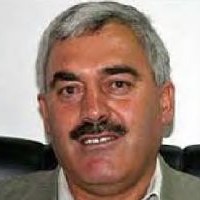
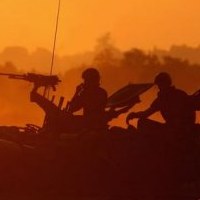
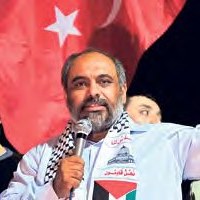
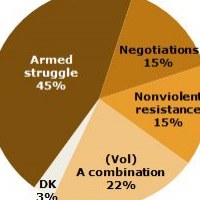
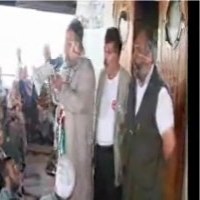




Latest Comments
Hello Mike, Thank you for your positive feedback to the article. I felt there wasn’t too much critical analysis of ...
Thanks for this considered and well constructed article. A follow up article on the manner in which the editorial contro...
THE CLUELESSNESS OF CLAIMING THAT OBAMA'S MIDDLE EAST POLICIES WERE A FAILURE CANNOT BE FURTHER FROM THE TRUTH, WHAT THE...
As long as Obama is the president of the usa do not trust the us government......
Thank you for an good read....